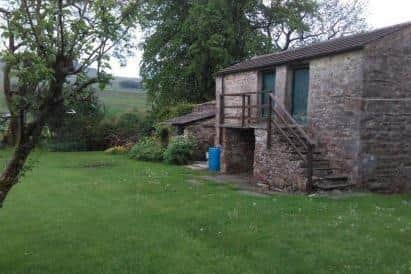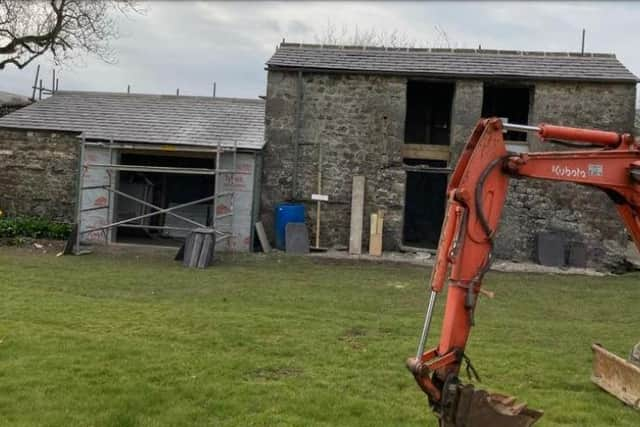Yorkshire Dales B&B owners refused permission to convert historic outbuildings into holiday let - after work had been completed
Robert and Jane Burdett applied retrospectively to the Yorkshire Dales National Park Authority for consent to work that had already been completed to a former stable and privy at the rear of The Rowe House in Horton-in-Ribblesdale. The outbuildings are now being marketed as a self-contained holiday let called The Shippon.
Yet the Authority's planners ruled that the scheme had caused 'significant harm' to the heritage of the 19th-century buildings and councillors agreed with their recommendation for refusal.
Advertisement
Hide AdAdvertisement
Hide AdIn such cases, applicants usually have to return the building or land to its original state, though they can appeal the decision or submit an amended application.


In the planning officers' report, the Authority's building conservation officer stated: "(I have) concerns regarding the loss of the former privy, and the impact of the development upon the traditional character and layout of the site and upon the setting of Rowe House."
It was clarified that rebuilding the privy, its change of use into accommodation and the erection of a timber linkway between the two outbuildings all required planning permission and were not covered by existing permitted development rights.
The report continues: "The larger building appears to a have been a byre and/or stable associated with the main house, and the smaller outbuilding was likely a privy and/or small store. Both outbuildings were of traditional construction and contributed towards the overall character and significance of Rowe House and its setting, largely by virtue of their historical functions and layout, and the group they formed with the main house.


Advertisement
Hide AdAdvertisement
Hide Ad"The Authority’s building conservation officer has commented that the historical grouping of the privy, byre and Rowe House is of sufficient significance to be considered a non-designated heritage asset. The heritage statement submitted with the application comprises a simple description of the works already completed to the outbuilding and is not consistent with the requirements of the NPPF.
"Prior to the recent works, the small privy building constituted a detached structure located immediately east of the larger outbuilding. The building has clearly been significantly rebuilt and extended and now includes a timber link, which connects to the adjacent building. The height of the building has also increased significantly and an entirely new roof structure and external roof covering has been added. The extent of works is such that the single-storey element, including the timber link, amounts to a modern extension to the byre/stable, albeit partially constructed from traditional materials.
"The works to the privy/store, including the timber link, amount to more than minor structural work and are clearly not the minimum necessary to facilitate the conversion of the outbuildings. The works have had a harmful impact on the character of the site, both in terms of the loss of the traditional outbuilding and the impact of the considerably larger replacement outbuilding upon the immediate setting of Rowe House. The newly constructed outbuilding/extension is of a significant scale and does not reflect the former function or character of the outbuilding which it replaced. The new timber link and domestic-style opening appear as particularly incongruous features, not consistent with the traditional character of the buildings.
"Whilst the conversion of the larger outbuilding has retained most of its former layout and traditional character, the loss of the original stone steps externally has had a negative impact upon the integrity and character of the site. Whilst it is noted that the steps were in a poor condition prior to the conversion, they could have been repaired or incorporated into the design of the conversion, rather than demolished and removed altogether. The concrete roof tiles that made up the roof covering of the building have been replaced with a more sympathetic Greys Artstone roof slate. This has had a positive impact on the character of the building."
Rowe House was built in the late 18th century as the shooting lodge for an Arncliffe landowning family. It has been a B&B since 1974.

